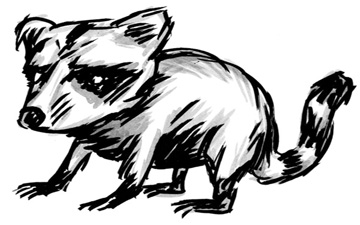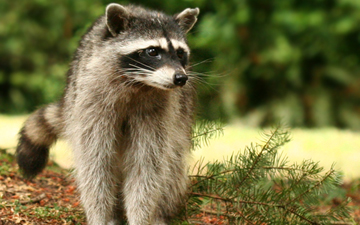The raccoon (Procyon lotor), sometimes spelled as racoon,[2] also known as the common raccoon,[3] North American raccoon,[4] northern raccoon[5] and colloquially as coon,[6] is a medium-sized mammal native to North America. As a result of escapes and deliberate introductions in the mid-20th century, raccoons are now also distributed across the European mainland, the Caucasus region and Japan. Their original habitats are deciduous and mixed forests, but due to their adaptability they have extended their range to mountainous areas, coastal marshes, and even urban areas, where some homeowners consider them pests.
(From Wikipedia, April 23, 2010)
– – –
Raccoons are among the most adaptable of the Carnivora, able to live comfortably in cities and suburbs as well as rural and wilderness areas. They use small home ranges, as small as 1—3 square km, and show flexibility in selecting denning sites, from tree hollows to chimneys to sewers. A varied diet is at the root of their adaptability. Raccoons eat just about anything, finding food on the ground, in trees, streams, ponds, and other wet environments, and from unsecured trash cans, which they open adroitly by hand. They can live anywhere water is available, from the deep tropics well into southern Canada. Even in the suburbs, Raccoons can occur at densities of almost 70 per square km. Females can breed when they are not yet a year old, and typically have litters of four young, which they raise themselves. The female nurses her cubs for about 70 days. The cubs’ eyes open at 18—24 days and they begin exploring the world outside the den when they are 9—10 weeks old. By 20 weeks of age they can forage on their own.
(From EOL via Smithsonian, April 23, 2010)
– – –





